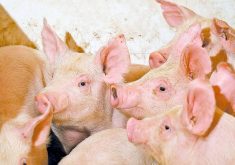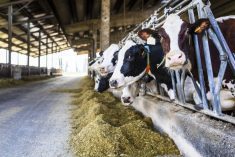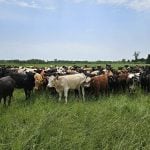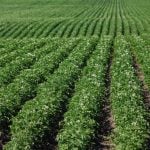Cattle are entering U.S. packing plants slightly thinner than a year ago as feedlots rush the animals to market to cash in on record-high prices and are no longer feeding them the growth promotant Zilmax, analysts and economists said.
The lighter cattle produce less beef at a time when there are fewer cattle going to slaughter. The combination of less beef and fewer cattle should mean record cattle and beef prices at least through the coming year, analysts said.
Recent droughts in the U.S. Midwest and Southwest plus record high feed prices caused a reduction in the U.S. cattle herd, which is now the smallest in more than 60 years.
Read Also

U.S. grains: Soybean futures set two-week high on US weather worry, soyoil rally
Chicago Board of Trade soybean futures touched a two-week high on Friday on worries that heat may threaten U.S. crops and expectations that the country’s biofuel policy would boost demand for soyoil, analysts said.
Year-to-date U.S. cattle slaughter, as of Oct. 26, was down 1.5 percent from the year earlier week, according to the U.S. Department of Agriculture. That decline helped drive prices for some slaughter-ready cattle last week to an all-time high of $132 per hundredweight (cwt).
Slaughter steer prices, on average, for 2013 are on pace to set a record for a fourth straight year at roughly $125.70 per cwt. Another record is expected in 2014, with prices averaging around $129.75, said Ron Plain, a University of Missouri economist.
During the week of Oct. 5, the latest weight data from USDA showed steer weights on a carcass basis at 875 lbs, down 5 pounds from the same period a year ago. During that same period, heifers shed 11 pounds to 796 lbs.
“Rising prices for slaughter cattle have resulted in a return to profitability at the feedlot level. This, then, is encouraging them to sell cattle more quickly, holding down weights,” said Elaine Johnson, analyst with CattleHedging.com in Denver, Colorado.
Other analysts and economists noted a marked decline in cattle weights after Merck & Co. decided in August to pull its feed additive Zilmax off the U.S. and Canadian markets.
Zilmax, the widely used and most potent among a host of muscle-building livestock additives known as beta-agonists, can add upwards of 30 pounds of beef on cattle during their last few weeks in feedlots.
Merck opted to suspended Zilmax for further testing after the country’s leading meat processors Tyson Foods Inc and Cargill Inc stopped buying cattle in September given the additive, citing animal welfare concerns.
Since early September, some feedlots switched to using a less-potent beta-agonist called ractopamine, made by Eli Lilly & Co’s Elanco Animal Health unit and sold under the brand name Optaflexx.
Additionally, some feedyards mitigated year-to-year weight declines by using more less costly feed – the result of this autumn’s bumper crop harvest. Both options require more time to grow cattle to heavier weight than Zilmax, said economists.
“The driving force of the current year-to-year decline in dressed steer and heifer weights is the removal of Zilmax, and largely the switching over to Optaflexx,” said Denver-based Livestock Marketing Information Center director Jim Robb.
He said the use of other beta agonists mitigated the decline in carcass weight that would have possibly fallen as much as 25 lbs had the industry removed both Zilmax and Optaflexx.
David Hales, president of Texas-based Hales Cattle Letter, said in a recent newsletter to his clients that cattle feeders seem be relearning how to effectively market their cattle with Zilmax no longer a part of the feeding equation.
Supplies of slaughter cattle in early October were much tighter than anticipated and are expected to remain scarce into December, said Hales.
“We suspect carcass weights peaked during the week of Oct. 5 and will gradually work lower though the balance of this year,” said Hales, citing forecasts for a wetter, colder second half of the fourth quarter than a year ago, which should affect the performance of cattle in feeding pens.















